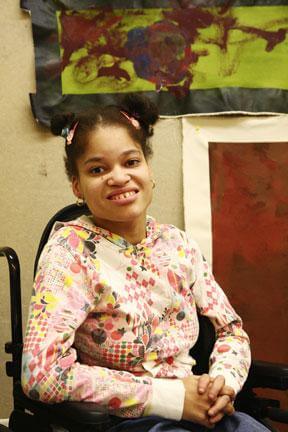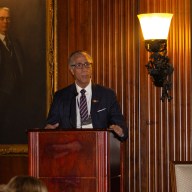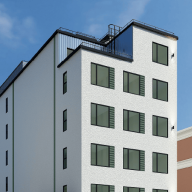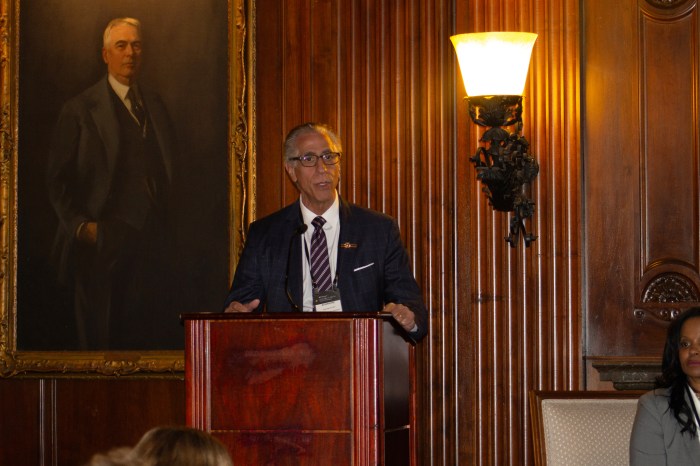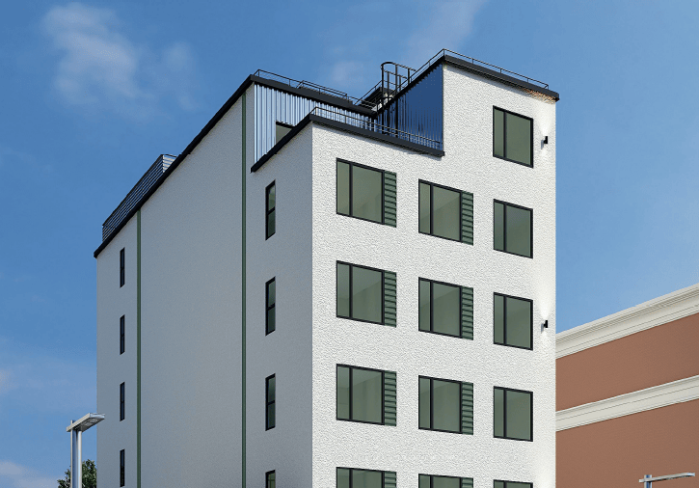An innovative program that helps persons who are developmentally disabled with limited motor skills paint with the help of lasers and an aide who applies the paint to canvas, made its New York City debut at the A.H.R.C. at 1500 Pelham Parkway South on November 13.
The program, which helps clients make all of their own choices in creating unique works of art on canvas, grew out of the vision of artist Tim Lefens, who started Artistic Realization Technologies in 1994. A.R.T. is based out of Princeton University, an Ivy-league college in New Jersey.
Lefens, who said that the idea for the program, which has helped well over a thousand painters who are non-verbal and/or paraplegic through the use of a “tracer”, a person who communicates verbally with the client so they can make all of their own choices when it comes to color blending, application, size of the canvas, and tools used, came after he did a workshop at a school for persons with disabilities.
“This is substantially different from art therapy because it is not guided by anyone but the artist themselves,” Lefens said. “The thought behind this is that art comes from inside of the person, and everyone has something to express inside of themselves.”
Clients who are non-verbal, but can blink their eyes or nod their heads, can respond to the questions posed by the tracer.
The clients usually have a laser pointer either attached to the side of their heads or to a remote control device if they have use of their hands.
The painters’ use a “point painter system” where canvass points are plotted based on where the artist chooses to focus his or her attentions. It is through focusing on many points that a final picture is created, sometimes resembling modern art in with fantastic swirls of color, but oftentimes building complicated paintings of figures and still life over the course of several months.
“Every move that is made on the canvas is painter approved, the tracer has zero percent input into what goes on the canvas,” Lefens said. “Strangely, this is our first program in New York City, even though we have done programs in many places around the country.”
The tracer asks the clients questions like: “what color do you want to work with,” and “is this tool the right tool?”
Henry Villegas, director of Bronx Intensive Services for A.H.R.C., said that the program greatly benefited clients who came to use it on Thursday, November 13. He pointed to one client in particular, Tasia Pitt, a 23-year-old client of AHRC.
“Tasia is making her own choices and it is her work – that is the bottom line,” Villegas said. “She had control over the way things should be with unlimited expression.”

